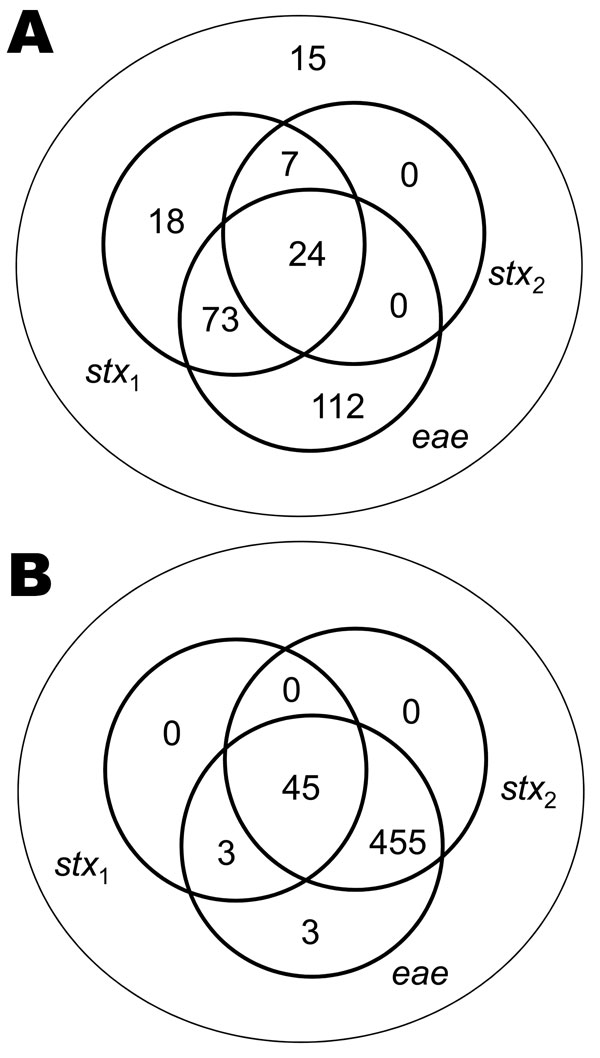Volume 18, Number 3—March 2012
Research
Pathogenic Potential to Humans of Bovine Escherichia coli O26, Scotland
Figure 1

Figure 1. Isolates of Escherichia coli O26 (A; n = 249) and O157 (B; n = 507), collected from a 2002–2004 field survey, that illustrate the differences between the 2 serogroups from Scotland with reference to the presence or absence of Shiga toxin gene (stx1 and stx2) and the eae gene.
Page created: February 16, 2012
Page updated: February 16, 2012
Page reviewed: February 16, 2012
The conclusions, findings, and opinions expressed by authors contributing to this journal do not necessarily reflect the official position of the U.S. Department of Health and Human Services, the Public Health Service, the Centers for Disease Control and Prevention, or the authors' affiliated institutions. Use of trade names is for identification only and does not imply endorsement by any of the groups named above.